第62章 THE WHITE FORD(4)
King Edward shouted to his knights, "Let those who love me follow me," and spurred his horse into the water.Behind him followed his most valiant knights, and Walter riding close to the Prince of Wales was one of the foremost.
The French resisted valiantly and a desperate battle took place on the narrow ford, but the impetuosity of the English prevailed, and step by step they drove the French back to the other side of the river.The whole army poured after their leaders, and the French were soon entirely routed and fled, leaving two thousand men-at-arms dead on the field.
King Edward, having now freed himself from the difficulties which had encompassed him on the other side of the river, prepared to choose a ground to give battle to the whole French army.
Louis had advanced slowly, feeling confident that the English would be unable to cross the river, and that he should catch them hemmed in by it.
His mortification and surprise on finding, when he approached La Blanche Tache, that twelve thousand men had been insufficient to hold a ford by which but twelve could cross abreast, and that his enemy had escaped from his grasp, were great.The tide had now risen again, and he was obliged to march on to Abbeville and cross the river there.
King Edward now advanced into the Forest of Cressy.
Hugh de le Spencer, with a considerable force, was despatched to Crotoy, which he carried by assault after a severe conflict, in which four thousand of the French men-at-arms were slain.The capture of this city removed all danger of want from the army, for large stores of wine and meal were found there, and Sir Hugh at once sent off a supply to the tired army in the field.
The possession of Crotoy and the mouth of the Somme would have now rendered it easy for the English monarch to have transported his troops to England, and to have returned triumphant after the accomplishment of his extraordinary and most successful march through France.The army, however, was elated by the many great successes it had won, he was now in Ponthieu, which was one of his own fiefs, and he determined to make a stand in spite of the immense superiority of the enemy.
Next morning, then - Friday the 25th of August, 1346 - he despatched the Earl of Warwick with Godfrey of Harcourt and Lord Cobham, to examine the ground and choose a site for a battle.
The plan of the fight was drawn out by the king and his councillors, and the king yielded to the Black Prince the chief place of danger and honour placing with him the Earl of Warwick, Sir John Chandos, and many of his best knights.
The ground which had been chosen for the battle was an irregular slope between the forest of Cressy and the river Maie near the little village of Canchy.The slope looked towards the south and east, from which quarters the enemy was expected to arrive, and some slight defences were added to the natural advantages of the ground.
On the night of the 25th all the principal leaders of the British host were entertained by King Edward.Next morning, Mass was celebrated, and the king, the prince, and many knights and nobles received the Sacrament, after which the trumpet sounded, and the army marched to take up its position.
Its numbers are variously estimated, but the best account puts it at about 30,000 men which, considering that 32,000 had crossed the Channel to La Hogue, is probably about the force which would have been present allowing that 2000 had fallen in the various actions or had died from disease.